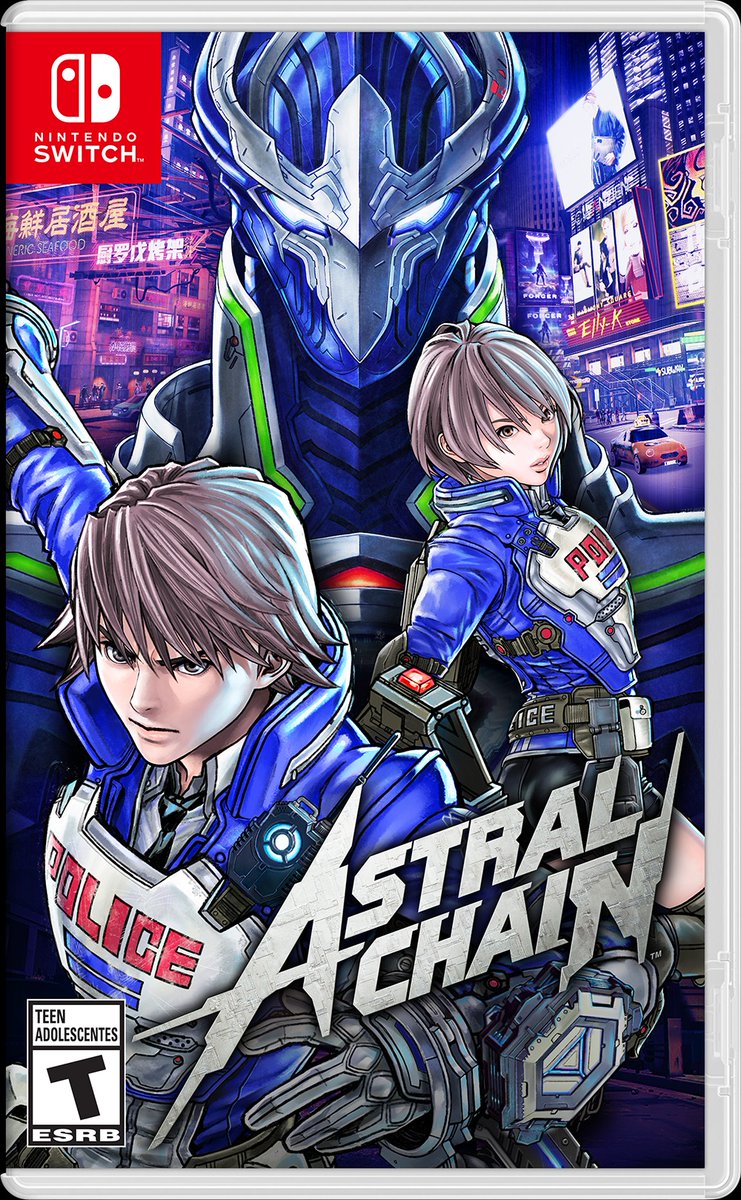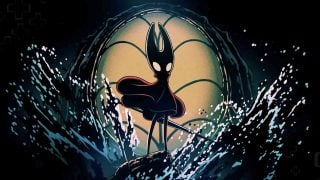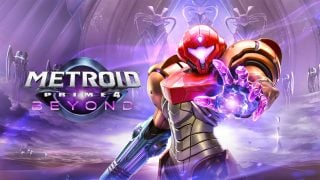After rolling out The Wonderful 101 on Wii U to high praise but low sales, Nintendo and PlatinumGames have been tethered together again to bring the world a new action title. The accessibility and polish of the former paired to the satisfying combat and zealous style of the latter complement each other perfectly, leading one to wonder if that interplay had a hand in inspiring the very core of the conjoined affair that is Astral Chain.
If Platinum’s Bayonetta was a superstar soloist confidently taking the stage and W101 was an ensemble marching in unison, Astral Chain is the perfect interplay of two dance partners caught in a desolate (though still visually appealing) future. Everything — from combat, to movement options, to some interacting with NPCs — involves your character and their Legion. These wraiths, kept in check through the titular tether, offer up different abilities in and out of battle as you unlock them, and even with no context, they’re a sight to behold thanks to the designs of mangaka Masakazu Katsura.
While you and your Legion working together make for the most visually impressive element of Astral Chain, its influence and world are worth taking in at every turn as well. The world is dying due to contamination from a parallel realm and strange interlopers, with the effects on the world warranting the creation of a city-island called the Ark to host survivors. You’re a part of the Ark’s special task force for handling extra-planar threats known as Neuron, the only force armed with converted and subjugated creatures from the other side — the Legions.

The inspiration and aesthetic is very anime, playing out like a blend of Ghost in the Shell and Neon Genesis Evangelion, with a helping of Jojo’s Bizarre Adventure for flavor. If any of those (or others of their ilk) appeal to you, then Astral Chain marks a fitting tribute, and it shouldn’t be missed. That said, the game’s its own beast, owing to the gameplay possibilities of the Legion.
It can’t be overstated that its combat is Astral Chain’s greatest asset. You’ll be simultaneously controlling two characters: your own avatar of a police officer and their Legion. You have your own moveset and the Legion theirs, but you’ll also be granted access to more Legions as the game goes on. These could be likened to getting a new weapon in Bayonetta, but they go beyond that in a unique fashion, as each one is a separate character you have conjoined control over. Each has their niche (your starting, all-arounder Blade Legion, the heavy lifting Arms Legion, etc.); and while you could theoretically focus on one outside of puzzles, I found the game most rewarding when I actively cycled through the roster to suit different enemies — all done seamlessly mid-battle.
It’s not just the Legion either, as what binds them to you is just as helpful a tool. The Astral Chain can be used to constrict enemies by circling your Legion around them, or you can pull it taut between you to slingshot charging enemies away. It may not always work out exactly as you want — but in pure Platinum fashion, everything looks spectacular in motion and it all feels incredible.
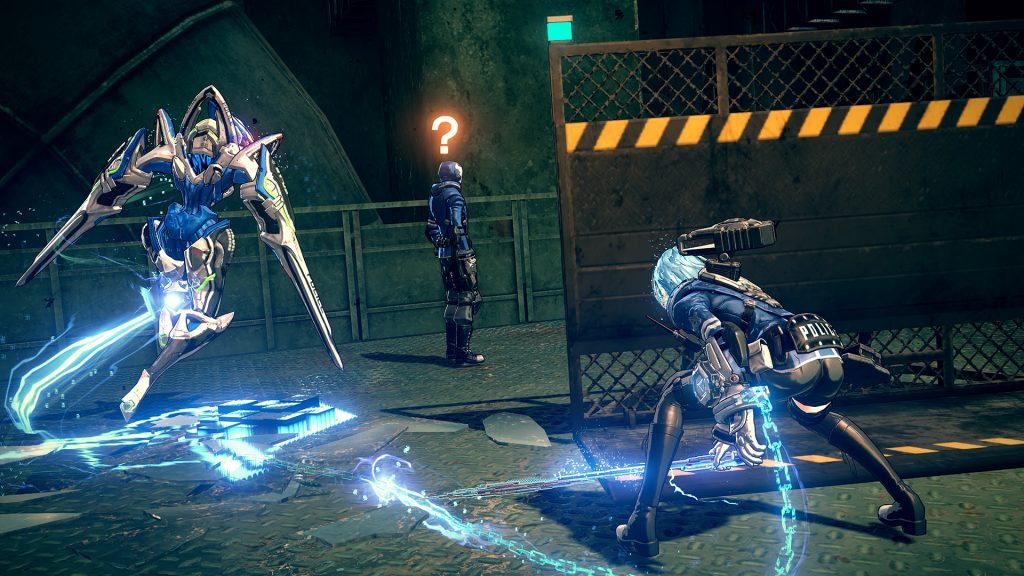
Out on Patrol
Structurally, Astral Chain takes place over a series of “Files,” or chapters, that run through a pretty set pattern. You’ll begin at the Neuron HQ, having the ability to interact with other officers or take care of gear and abilities. Similar to Fire Emblem: Three Houses, I caught myself checking in on everyone around the precinct; and while their personalities aren’t as fleshed out as that game’s cast, they do have their quirks and personalities. (Special mention goes to Marie Wentz, who moonlights as police mascot dog Lappy and has her charm both in and out of that persona. Once you have your main assignment of the File and are good to go, you’ll move on to a larger and more open environment out on patrol.)
Even if the game presented its plot with urgency, I always took the time to scour its cityscapes for extra objectives. This is where Astral Chain’s police theming shines, as you can serve and protect in a variety of ways via these side quests. Moments included apprehending a graffiti artist whose art attracted birds, replacing a child’s ice cream cone near a busy city crossing, thwarting a shadow organization alongside an overzealous officer, and picking up more empty cans than I can count. While all of this was optional, the rewards build up and create a nice contrast with the core experience. They also offer up some more humorous and heartwarming moments that help further immerse you in the world of the Ark.
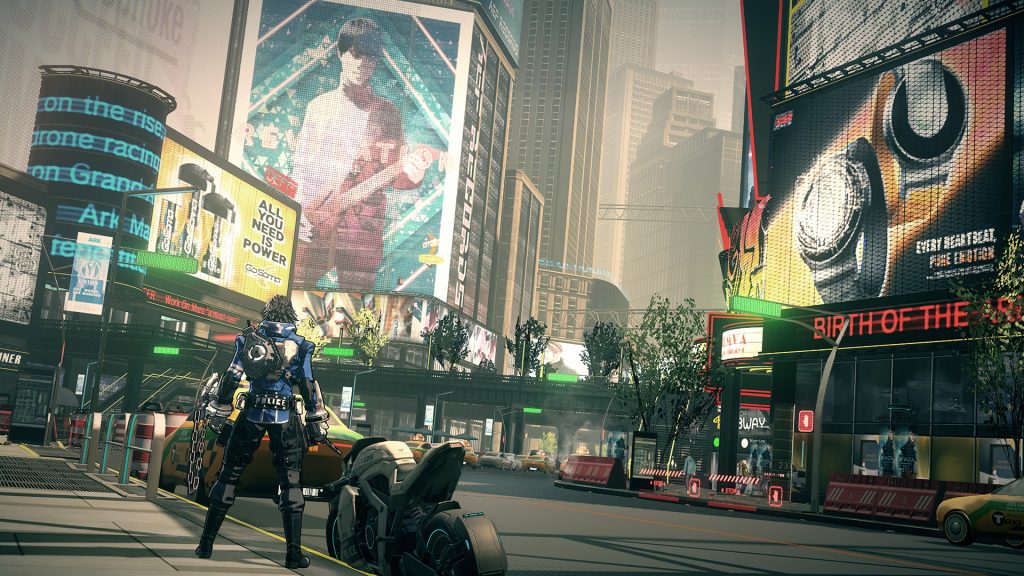
When it’s time to get things going, you’ll be putting some core, investigative skills to work. Some of these are down to you as an officer, such as asking NPCs about goings-on or observing old security footage. These are done both on your own and with the help of your Legion — opening possibilities, like sending it to eavesdrop on people who might not be so generous with intel. These more professional uses are a decent way to spend your time playing, though you’ll also get use out of your Legion with tasks like grabbing a kid’s balloon out of a tree, or removing mysterious contaminations from passersby. Equal parts silly and serious, while at most times satisfying.
It’s worth noting, however, that sometimes things are bogged down by a few repetitive or unrewarding operations. You’re given access to something called an IRIS, which boils down to a visual overlay you can toggle with the press of a button, highlighting the world to let you know what’s important and interactive. As a mechanic, it’s helpful — but just like in titles such as the Batman Arkham games or certain Assassin’s Creed entries, it has a tendency to give too much info while also robbing the world of its own visuals. Occasionally, its use is fully justified (such as in an area covered in smoke, requiring the overlay to get around), but more often than not, I ended up keeping it on for the sake of findables and extra info, at the expense of immersion and artistry.
After investigation comes action, and it’s in this department that Astral Chain shines brightest. More often than not, you’ll pass through a gate into the Astral Plane, a red and angular realm full of foes and environmental exploration. As explained earlier, combat is addictive and adaptive due to the amount of interplay between you as a character and your Legion. After you have all the Legions available, some weapon and skill upgrades, and you get the hang of controlling the two characters at the same time, you’ll revel in any chance you get to put those skills to use. While routine enemies serve more as fodder and an exercise in stylish expressionism, some of the boss fights and more thematic encounters are pure Platinum.
Astral Pain
When you aren’t fighting in the Astral Plane, it runs into a handful of problems that made it the most tedious part of the game. In theory, these areas are like Breath of the Wild’s shrines — contained challenges that are (generally) built around a central idea. Here those ideas are using various Legion techniques, like using the Beast Legion’s quicker pace to avoid disappearing floors or sending your Legion out and having it pull you to its location via the chain. Performing these techniques isn’t tricky, but more times than I’d care to admit I caught an edge of a platform or some other obstruction before falling and taking a hit to my health. Thankfully, this one doesn’t put much stock in your health bar when it comes to rankings (a staple of Platinum titles), but it’s a repeat annoyance when it comes to exploration.
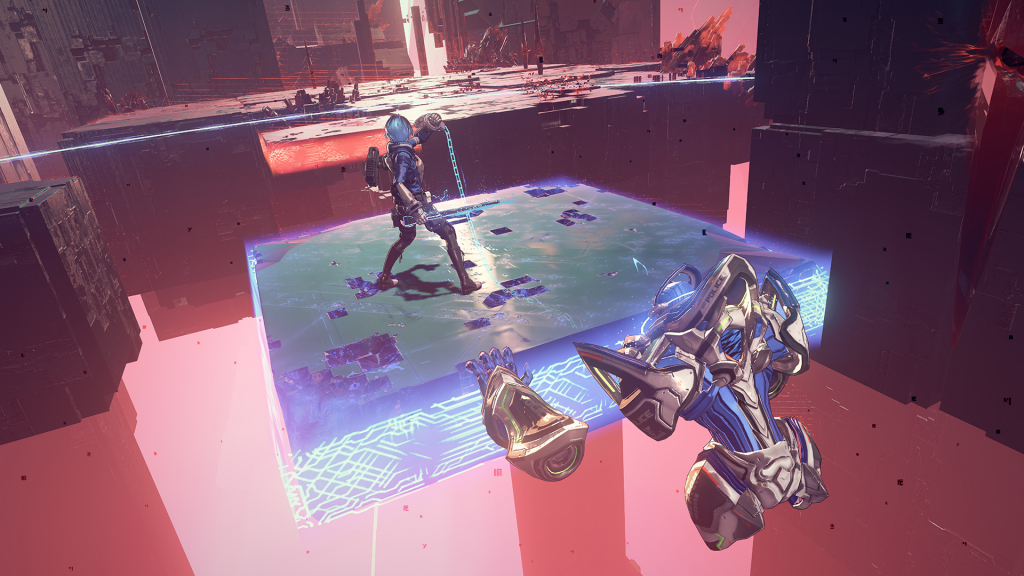
That, mixed with the same undulating red and black color scheme in each of these areas (that, or toggle on the IRIS again), simply makes these gated sub-sections not as interesting as the world of the Ark. Certain chapters that do away with the bigger Plane exploration segments and have you somewhere else — like a dilapidated mall or quarantined off slums — end up more visually interesting and enjoyable to play through without the frequent pitfalls. While from a plot perspective the Astral Plane and its encroaching contamination are important, any time I had to go there myself I couldn’t wait to leave.
Pure Platinum
Ultimately, it’s a credit to the game’s combat and overall intrigue that even at those times I moved forward to see what would come next and how I could keep improving. Platinum has developed a narrative style over time that’s unmistakably them, though unlike the saturated sentai of The Wonderful 101 or Bayonetta’s akashic action, Astral Chain feels equal parts police procedural and sci-fi anime. Revelations about what’s happened to this world will come from its own plot and supplemental background information within the game, with some swerves and surprises along the way.
Replayability is high as well, particularly for completionists and those brave enough to chase ranks in the game’s unlockable, harder difficulty. There are several, game-wide challenges that reward you with resources and costumes, and the game actively tracks your side quest completion and collectible acquisition. Replaying Files is as easy as checking your PC at the station, and you aren’t locked to any one difficulty. All these attributes coalesce, validating that your enjoyment with the game won’t stop, even after the first playthrough.
Ultimately, Astral Chain marks another stunning effort from PlatinumGames. Their mastery of action titles shines through in the combat, progression, and possibilities that the Legion affords; and their vision of a world on the brink of collapse is equally lustrous. While it falls into some trappings both general and unique, its inspired design choices in combat and the wealth of customization it provides makes the game stand out even amongst other Nintendo published titles. It can be intimidating at times, but Astral Chain is a game anyone with a Switch should be investigating for themselves.
Leave a Comment
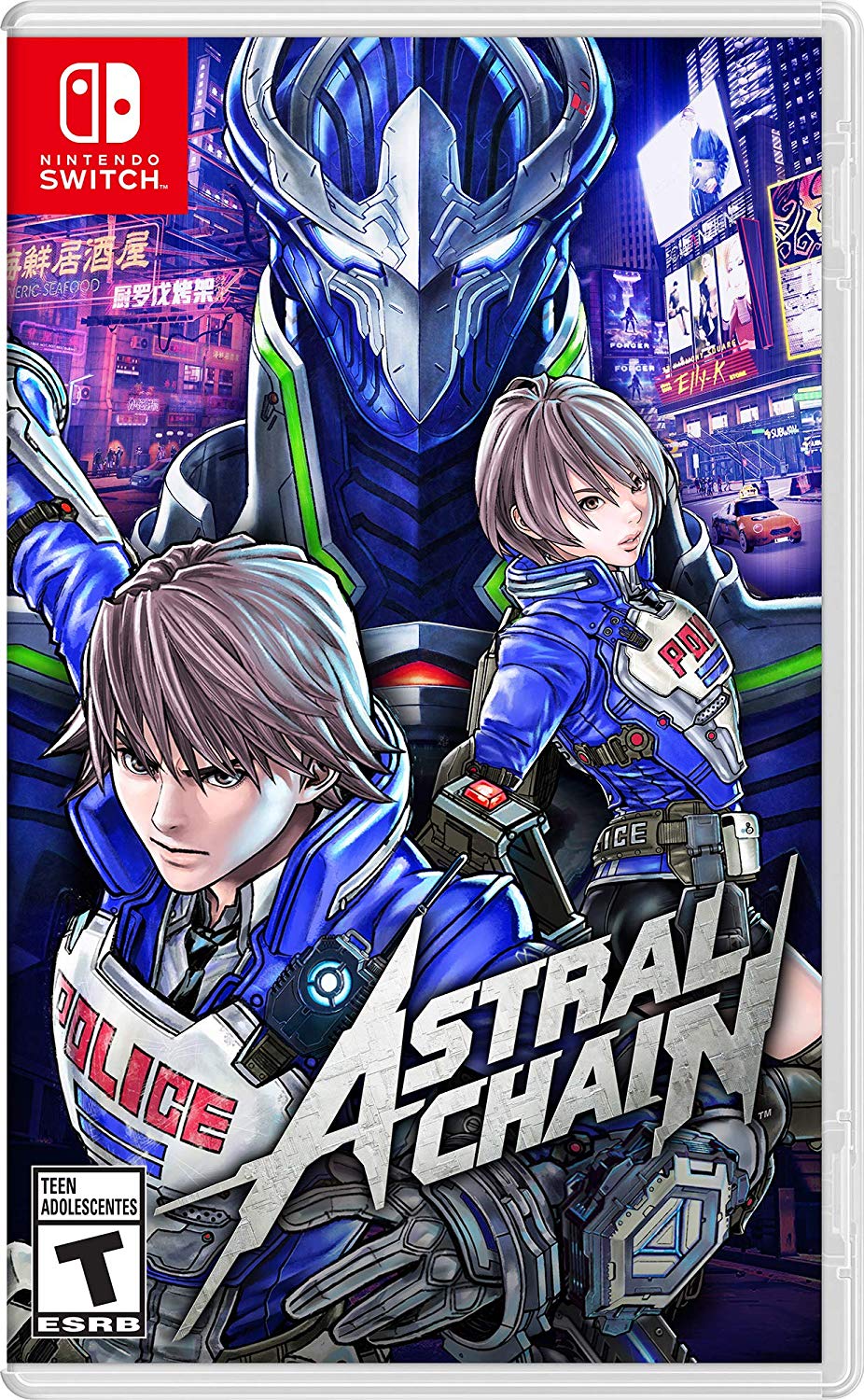
System: Nintendo Switch
Release Date: August 30, 2019
Categories: Action
Publisher: Nintendo
Developer: PlatinumGames
